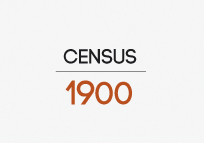




BELGIAN SOCIETY IN HISTORIC CENSUSES
Population census 1900
Organisation of the census
In implementation of the law of 2 June 1856, which required a census every 10 years, the government organised a general census of the population in every locality of the kingdom on 31 December 1900. The aim of the operation was to determine the size of the population, to describe the main characteristics of the population, and to collect the necessary information for drawing up new municipal registers. Determining the official size of the population was necessary for diverse administrative activities, such as calculating the number of seats in parliament.
The census was organised by the Ministry of Home Affairs and Public Education. The Central Commission of Statistics gave advice during preparation and execution of the undertaking. The actual census and the processing of the data was entrusted to the municipal authorities. They were responsible for appointing census agents, numbering the houses, distributing the family forms, collecting, completing and checking the filled in lists, analysing the census maps and providing all kinds of other information to higher levels of government. The individual data had to be reported by the head of the family. The census agents were required to fill in and complete the records if that was necessary.
The entire operation, from the first implementing order to the publication of the results, took three years (April 1900 - May 1903). The total budget was 746,000 frank; the majority of this went to the census agents. A total of 6713 census agents were involved; each of them received an average compensation of 8 centime per counted person.
- Organisation of the census
- Source criticism
- Content of the internet tables
- Concepts